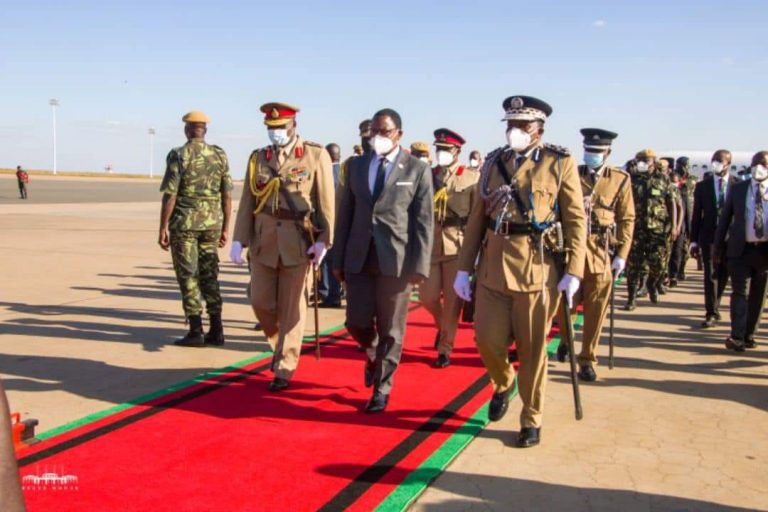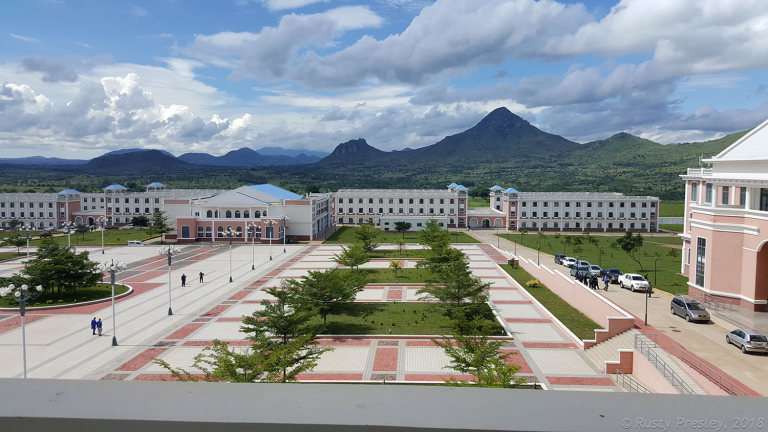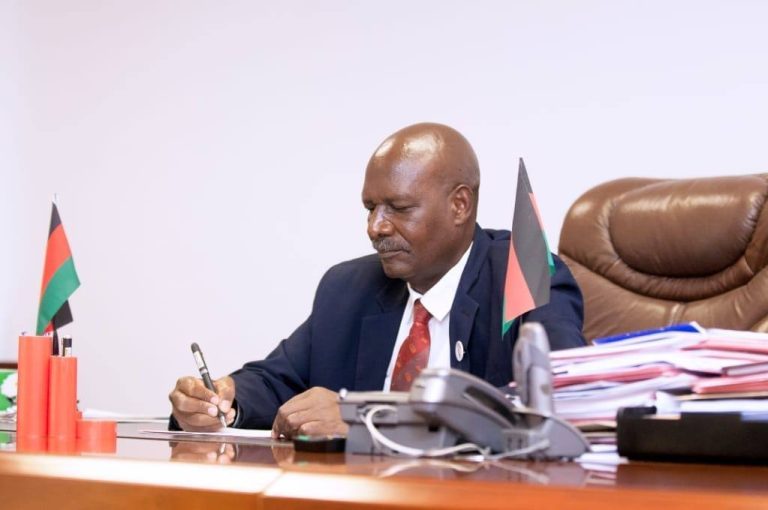BY EARLENE CHIMOYO
Uncertainty hovers around the reconstruction of the broken M1 road, especially in Blantyre’s Kabula, where the road was completely cut off, and the Government seems clueless about what it can do, even in the interim, to open the road, which is a significant economic route for Malawi.
This ambiguity has been exposed with the recent pounding exerted on the country by Tropical Cyclone Freddy (TCF) in early March. It has further shown the country’s poor level of preparedness, especially in the infrastructure sector.
During the week-long continuous rainfall and pockets of mudslides and water bursts on several hills, the country has seen one of its worst cases of destruction caused by natural calamity.
What is worrying is that the government has also admitted to lacking proper preparedness in the infrastructure sector.
“I can admit. I know that because we do not have a budget for disaster preparedness regarding infrastructure damage. So, I would be able to say that that is truer as it were, we are not in a position to say we are prepared for such,” acknowledges Jacob Hara, Minister of Transport and Public Works.

According to the Department of Disaster Management Affairs (DoDMA), over 35 roads and bridges were damaged during the cyclone.
The development has raised questions about the quality and resilience of such infrastructure, as some roads and bridges suffered similar damages before.

National Construction Industry Council (NCIC) Chief Executive Officer Gerald Khonje described the devastation left in the wake of Tropical Cyclone Freddy as an ‘infrastructure audit’ for Malawi, which has exposed many grey areas and gaps that need filling.
Khonje cites flaws such as vandalism of road infrastructure, poor designs and low implantation of set designs, and poor drainage systems, as the leading causes of the extensive damage caused to road infrastructure.
The damage also raises questions about what key stakeholders are doing to ensure the country is prepared for such unforeseeable destructions and put resilient mechanisms or systems in place.
Failure to Fulfil the Mandate
Government ministries, departments, and agencies, such as the Roads Authority, the NCIC, and the Ministry of Transport, have also been caught unprepared. However, they all have a mandate to ensure quality road infrastructure.
For instance, NCIC was established by an Act of Parliament in 1996 with the mandate to regulate, develop and promote the construction industry in Malawi.
Khonje says they have policy guidelines and strategies, such as the Infrastructure Delivery Standard, which addresses the challenges and loopholes making local roads bear the brunt of such disasters.
However, some said guidelines are yet to be gazetted for the council to start enforcing and pouncing on road project contractors.

“The guidelines are guidelines, but components of those guidelines must be gazetted so that they are enforceable as very important regulations. And these guidelines are applicable not only on the recovery path but also in terms of infrastructure delivery, not only because of what has happened due to cyclone Freddy,” said Khonje in an interview with PIJ.
He added that the cyclone has enhanced the importance of following these guidelines. NCIC-registered members who do not follow them would face disciplinary measures, besides ensuring that compliance is improved.
Minister Hara, an engineer by profession, also shared Khonje’s observation. He said there is too much cutting of corners in most road projects, propagated by budget constraints or utter complacency.
“The best way is to look at why contractors cut corners. I believe it starts from procurement because our procurement system forces us to pick the lowest evaluated bidders, and sometimes the people that bid low later find out that they really can’t do the work with the money. So, they cut corners to try to cover a few areas, and in the end, we have a product that we never really wanted,” Hara said.
While the damage has already been done, the road to recovery now stresses the authorities.
In most cases, the Roads Fund Administration has played a vital role in financing rehabilitation works after such damages in the aftermath of the rainy season or adverse weather-induced disasters.
The current road network and infrastructure damage put Capital Hill under immense pressure to identify funds. Hara discloses that a preliminary damage assessment shows that K120 billion will be required to rehabilitate the damaged roads and bridges.

However, the RFA indicates that it is overwhelmed to meet the financial requirements of the rehabilitation process, as footing the whole bill would mean putting on hold some already budgeted road projects whose source of funding is RFA Basket.
The fund collects revenue through various levies, which are pooled in a fund for road rehabilitation and construction.
While admitting the huge rehabilitation bill, RFA officials’ support calls for extensive resource mobilisation, which the Ministry of Finance is undertaking and needs collaborative efforts by all the key stakeholders.

To emphasize the deficits, Blantyre City Council Chief Executive Officer Denis Chinseu gave a preliminary budget for rehabilitating damaged roads in the city of around K15 billion. This is far beyond the K11.9 billion the council has received from the RFA in the past six years under the Special City Roads Rehabilitation Program.
Institutions such as DoDMA are legally tasked with ensuring disaster resilience and response. And by extension, they are supposed to push for resource allocation to carry out relief, response, and rehabilitation of displaced persons and damaged infrastructure.

DoDMA Commissioner Charles Kalemba indicates that although they are mandated to conduct resilience-building activities and strategies, their role in the current rehabilitation process is limited to coordination.
“We have the recovery phase…[where] we do a post-disaster needs assessment requirements; it is DoDMA that coordinates,” Kalemba said. “That we are only coordinating because the ones who would say how the bridges have been destroyed [and] what would be required to put the bridges back are the respective sectors.”
Slow Pace to Rehabilitation
Drawing lessons from the devastation, the government tasked a multi-stakeholder team to develop a Post Disaster Needs Assessment.
When he addressed the team in mid-April, Kalemba lamented the slow pace at which the country conducts such assessments, expressing fear that the snail’s rate of such is a significant threat to economic growth and recovery amid continuous cyclones and climate change-induced disasters.
He said: “The country is currently implementing recovery plans for cyclone Kennedy and Idai, yet in 2022 we were hit by storm Ana and cyclone Gombe.
“Now, we have been hit by cyclone Freddy. If we are not moving fast, the result will be that the economy and livelihoods of this country will continuously deteriorate. Therefore, this time, we have to work faster to have the recovery plan in place, mobilize resources and start implementation before the next season.”
Such concerns are raising more significant concerns about the rehabilitation process, as what is apparent is that beyond financial constraints being a major challenge, slow and poor pro-activeness in assessing disasters is another factor dragging recovery and rehabilitation.
In 2022, the country was devastated by tropical storm Anna, which tore the Shire Valley area, ripping roads apart, causing death and damaging the much-anticipated Shire Valley Transformation Project’s (SVTP) Irrigation canal and the coffer dam for the 129-megawatt Kapichira power station.
The Kapichira station is only back in operation at over 90 megawatts of generation, with the SVTP slowly resuming canal construction.
However, in some parts where the M1 road was cut, temporal rehabilitation still stands without fully contracted bituminized renovation of the sites (two spots adjacent to the shire crossing in Chikwawa- Pictures below).



RA Ducks and Dived as Minister Hara Concedes Lack of Preparedness
The Roads Authority ducked and dived when asked to explain this lack of movement, which may be costly should another heavy disaster hit again.
Transport Minister Hara, however, indicates that they tend to be restricted due to lacking a disaster management and recovery budget. Still, they are working on mobilizing resources to rehabilitate the roads damaged by TCF and those destroyed in previous catastrophes.
“For the past years, traditionally, the ministry has been funded centrally, so we do not mobilise resources for disasters and construction of roads; that’s where we need to change the way we do our business because currently, it is becoming apparent that we cannot fund construction and construction development from our budget line,” Hara said.
He said this is a new phenomenon regarding disasters, as the government did not consider budgeting for it.
But speaking during a ministerial road inspection after the TCF, RA Director of Maintenance Florence Ndenguma disclosed that the authority was assessing the damage by the end of March, whose findings report was to be submitted to the RFA as the financier of most road rehabilitations.
The set boundaries and limitations in the mandates of key players such as DoDMA and NCIC would somehow be seen as a bottleneck in penalizing other players in the chain that are not living to the expected standards.
On April 12, Parliament tabled and passed the Disaster Risk Management Bill, legislation believed to be a game changer for the current situation.
Kalemba points out that the newly passed DRM bill will likely broaden its mandate and reach.
“Every year, when we are going towards the rainy season, we write the councils to warn them if we note a problem on a road network. We write the duty bearers to act. Of course, with the current law, we only warn or advise them. But the new law, once assented to by the president, we will have the power to take action against any duty bearer who is not taking our advice seriously,” Kalemba said.
Our sources have disclosed that a considerable percentage of sectoral assessments have been completed, and others have already submitted their reports to DoDMA.
TCF Emergency Response Plan Finalised
The government finalized TCF Emergency Response Plan; according to DoDMA estimates, the immediate humanitarian response needs is at MK147.8 billion (US$ 143.6 million).
However, Capital Hill has a deficit of MK110.6 billion (US$107.3 million) for its short-term response, with the recovery and reconstruction of the affected sectors envisaged to be implemented over one to five years.
Meanwhile, the NCIC has called for collaborative and coordinated efforts by critical stakeholders towards enhancing Malawi’s disaster resilience and preparedness.
The NCIC is even offering to lead in developing what it calls an Infrastructure management strategy.
Currently, they are working together with the DoDMA, and Geological Survey Department on long-term measures aimed at ensuring robust preparedness systems in the infrastructure sector.
On its part, the geological department is set to embark on a mapping exercise to mark sites that are geologically safe and not safe for construction projects.
“As a department, what will happen now is to go back to these areas where such occurrences happened to understand the extent of the area which was affected and to do mapping, and that mapping should lead to recommendations,” explained Kondwani Dombola, director of the geological survey department.
He hints that some recommendations may be evacuations and relocations of people in settlements deemed risk areas.
In the meantime, President Lazarus Chakwera engaged some multilateral partners for possible financial assistance towards meeting the recovery needs fund deficit.

.jpeg)





.jpg)
